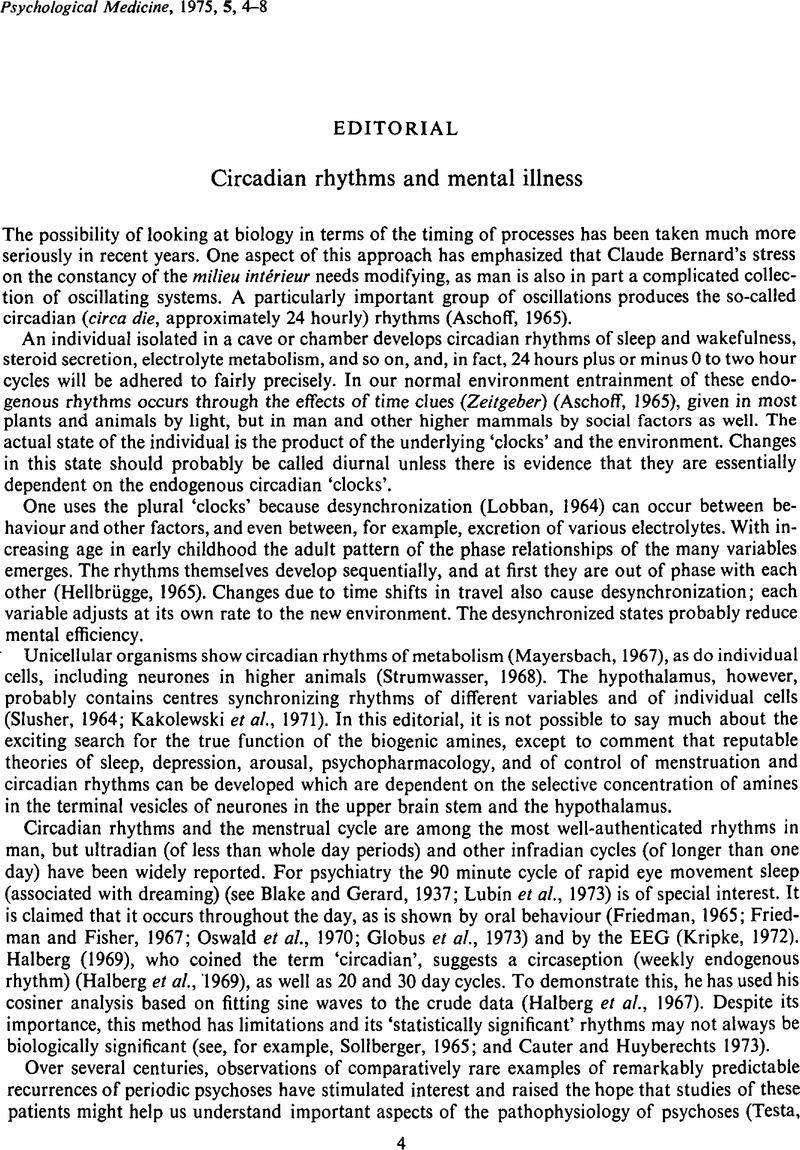Crossref Citations
This article has been cited by the following publications. This list is generated based on data provided by Crossref.
STEPHENS, GWEN J.
1976.
Periodicity in Mood, Affect, and Instinctual Behavior.
Nursing Clinics of North America,
Vol. 11,
Issue. 4,
p.
595.
Jimerson, David C.
Lynch, Harry J.
Post, Robert M.
Wurtman, Richard J.
and
Bunney, William E.
1977.
Urinary melatonin rhythms during sleep deprivation in depressed patients and normals.
Life Sciences,
Vol. 20,
Issue. 9,
p.
1501.
Thompson, Christopher
1984.
Comments.
British Journal of Psychiatry,
Vol. 145,
Issue. 2,
p.
204.
SCHWARTZ, MICHAEL ALAN
and
WIGGINS, OSBORNE P.
1987.
Drs. Schwartz and Wiggins Reply.
American Journal of Psychiatry,
Vol. 144,
Issue. 5,
p.
694.
LEONG, GREGORY B.
1987.
Outpatient Civil Commitment.
American Journal of Psychiatry,
Vol. 144,
Issue. 5,
p.
694-a.
1987.
Outpatient civil commitment.
American Journal of Psychiatry,
Vol. 144,
Issue. 5,
p.
694.
Healy, D.
and
Waterhouse, J. M.
1991.
Reactive rhythms and endogenous clocks.
Psychological Medicine,
Vol. 21,
Issue. 3,
p.
557.
Healy, D.
and
Waterhouse, J.M.
1995.
The circadian system and the therapeutics of the affective disorders.
Pharmacology & Therapeutics,
Vol. 65,
Issue. 2,
p.
241.



